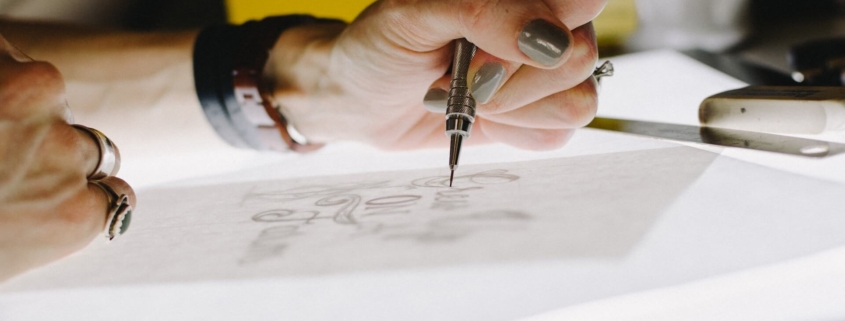Keep Your Landscape Future proofed! The Benefits of Adaptable Design
Your outdoor living space is an important part of your home and should be designed to stay enjoyable for years to come, no matter what Mother Nature throws at it. So what’s the most adaptable way to create a gorgeous landscape? You guessed it ‘s an adaptable design! Through this ultimate guide, you’ll explore all the creative options that exist when designing with an ever changing environment in mind. From permaculture principles that conserve water and energy use, to environmentally friendly hardscaping materials available on today’s market these strategies will ensure your landscape looks beautiful for decades while also reducing maintenance costs over time.
Adaptable design
The concept of Adaptable Design is becoming increasingly important in today’s fast-paced world. Adaptable Design is all about creating spaces that are flexible and able to meet the changing needs of individuals and families. Whether it’s for those who are aging in place, individuals with disabilities, or families with children, adaptable design makes homes accessible to everyone. By incorporating universal design principles into their homes, people can live in a space that is both safe and comfortable. Not only does adaptable design improve the functionality of a living space, but it also adds value to a property, making it a worthy investment for anyone looking to make their home more adaptable to life’s changes.
Overview of permaculture principles
Permaculture is not just about growing food sustainably, it’s about creating a holistic eco-system that mimics nature itself. At the core of permaculture is the idea of adaptable design, where human systems work in harmony with the natural environment. This allows for a more resilient and regenerative system that can adapt to changing conditions. One example of this is designing accessible homes that make use of passive solar energy and other natural elements to reduce their environmental impact. By following the principles of permaculture, we can create a world where human needs are met without sacrificing the health and well-being of the planet.
Different hardscaping materials that are eco-friendly
Eco-conscious homeowners are increasingly looking for ways to incorporate sustainable and environmentally friendly Accessible homes materials in their home renovation projects. When it comes to hardscaping, there are several options to choose from that can meet both design and environmental goals. One such material is permeable pavers, which allows water to filter through the pavement and recharge the groundwater instead of causing runoff. Another eco-friendly material for hardscaping is reclaimed or recycled wood, which can contribute to a rustic or natural look. Whatever material is chosen, it is important to consider not just the aesthetic, but also adaptability and accessibility, especially for homes that may need modifications for aging or disabled individuals. With adaptable design and eco-friendly materials, homeowners can create a sustainable, beautiful, and accessible outdoor space.
Ways to save water by using native plants
As populations continue to grow and water supplies become limited, it’s crucial that we find ways to conserve this precious resource. One simple way to reduce water usage is by incorporating native plants into your Accessible homes landscape design. These plants are uniquely adapted to the local climate, meaning they naturally require less water and maintenance. In fact, some species can thrive on rainfall alone! Adaptable design is key when it comes to using native plants effectively. By strategically placing them in areas where they can receive the right amount of sunlight and water, homeowners can create a beautiful, water-efficient landscape that benefits both the environment and their pocketbooks. Not only that, but incorporating accessible homes can be made possible thanks to the use of these native plants. So why not think outside the box and consider native plants for your next landscaping project?
Tips for designing with seasonal changes in mind
Designing with seasonal changes in mind can be a great way to ensure that yourAccessible homes look great no matter what time of year it is. One of the best ways to achieve this is by opting for adaptable design. This essentially means that you should aim for a design that can easily be updated or changed when the seasons change. Another important consideration is making your home as accessible as possible. This means ensuring that every aspect of your home can be easily accessed and enjoyed by everyone who lives there. By keeping these tips in mind, you can create a home that looks great and feels welcoming no matter what the season may be.
Ideas for creating a beautiful landscape
Creating a beautiful landscape is an art form that involves careful consideration of design elements, making the most of your property’s natural features, and tailoring your space to meet your needs. One way to ensure your landscape stands the test of time is to incorporate adaptable design. This means using materials and plant varieties that are low-maintenance and can withstand various weather conditions. Additionally, consider accessible homes, which allow you to age in place comfortably and conveniently. Whether you’re starting with a blank canvas or looking to refresh your existing surroundings, incorporating these ideas can help you achieve a beautiful and functional landscape.
In conclusion, the concept of Adaptable Design is something that every homeowner should consider. By incorporating universal design principles, homeowner Accessible homes can create a space that’s comfortable and functional for everyone in their family while still adding value to their property. By taking a holistic approach to designing their living space, people can craft an adaptive environment that will enhance any lifestyle and bring peace of mind in knowing that future generations will be able to enjoy the same comfort and accessibility. Homeowners who are interested in learning more or implementing adaptable design into their own homes should reach out to an experienced interior designer who specializes in this field. With guidance from the right expert, you can create an inviting home that evolves with your lifestyle for years to come.


